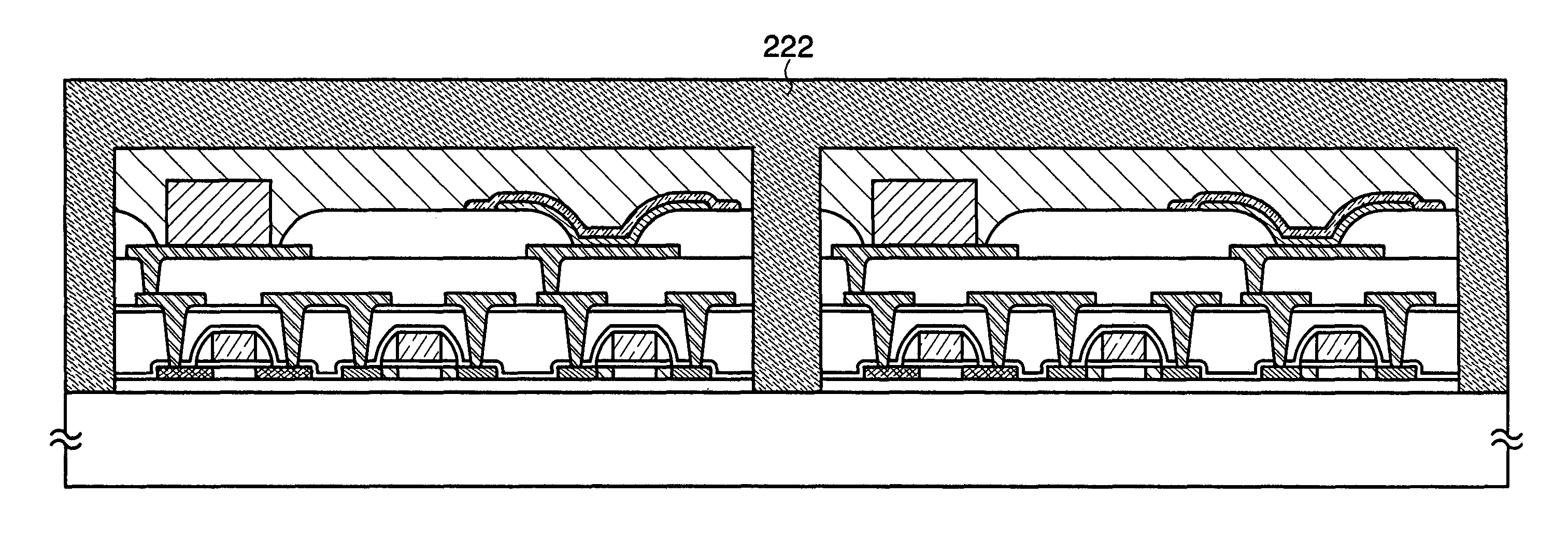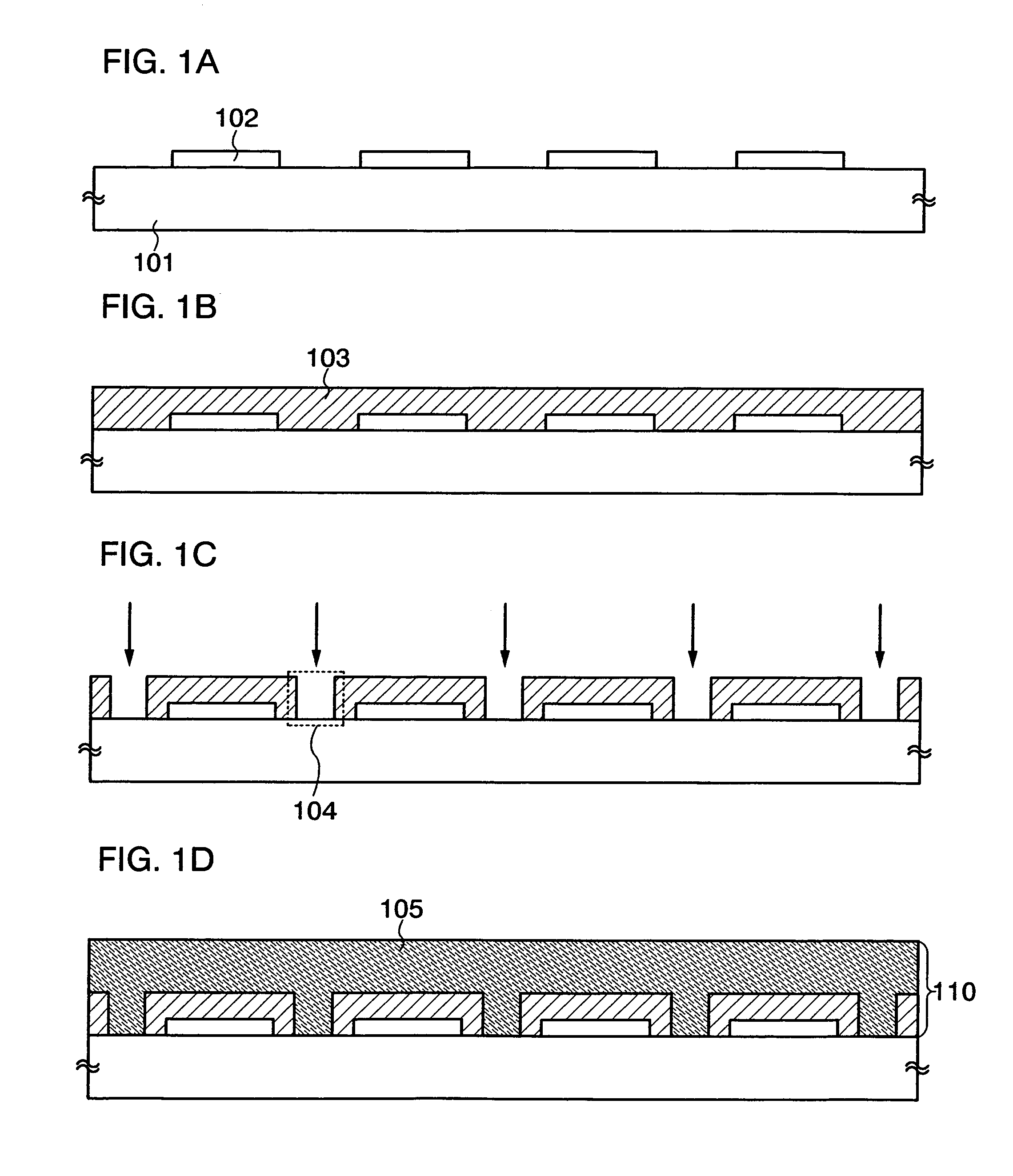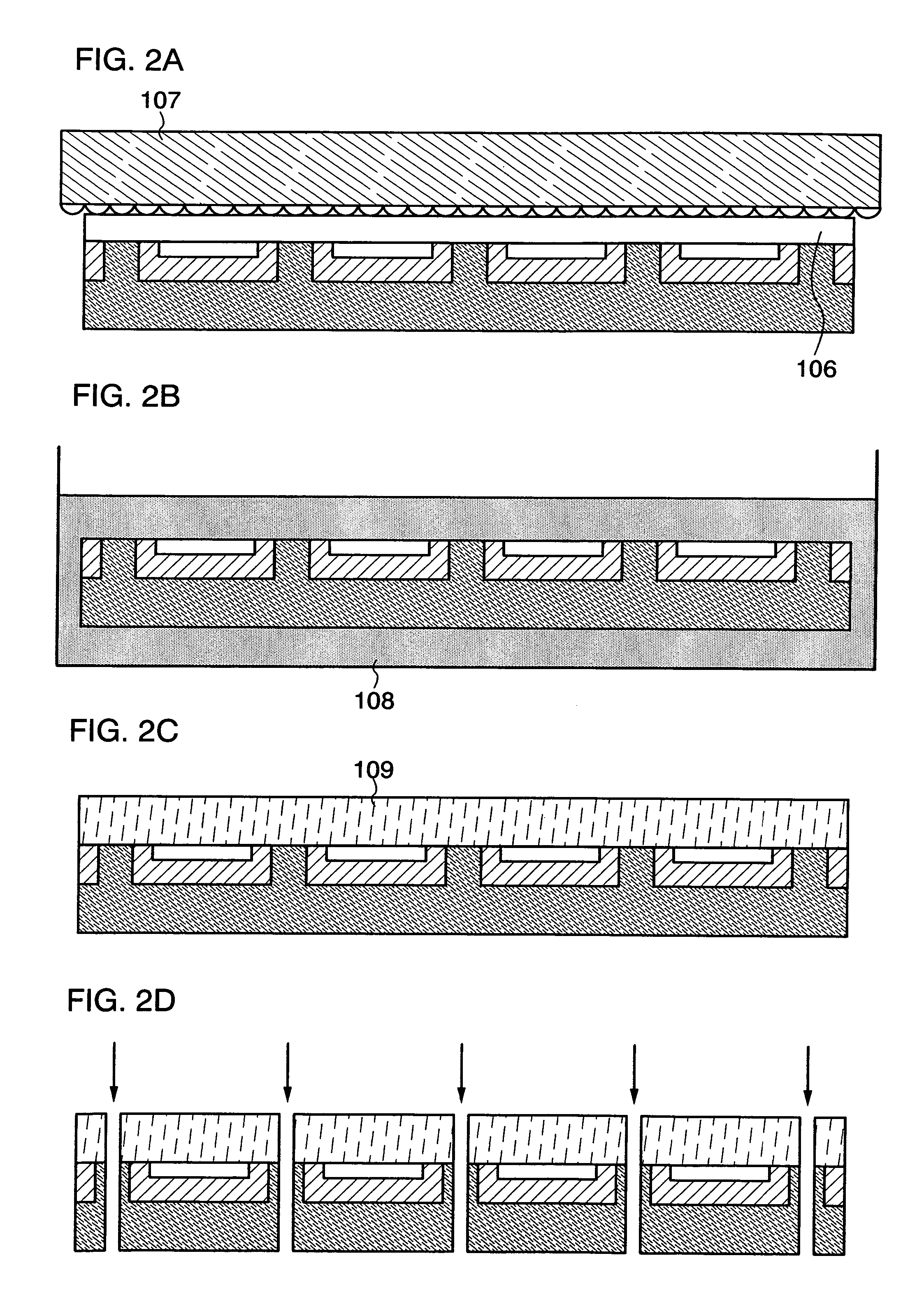Manufacturing method of semiconductor device
a manufacturing method and semiconductor technology, applied in semiconductor devices, semiconductor/solid-state device details, electrical devices, etc., can solve the problems of difficult to remove the substrate, limit the thickness of thinning a film, and the entire surface thickness of 50 m or less, so as to prevent damage and improve the throughput speed of a semiconductor devi
- Summary
- Abstract
- Description
- Claims
- Application Information
AI Technical Summary
Benefits of technology
Problems solved by technology
Method used
Image
Examples
embodiment mode 1
[0030]This embodiment will explain an example of a manufacturing method of a semiconductor device of the present invention with reference to drawings.
[0031]First, an element group 102 is formed over a substrate 101 (FIG. 1A). In this embodiment mode, the element group 102 constituting a semiconductor device is provided in plural over the substrate 101. By forming the element group 102 in plural over the substrate 101, a plurality of semiconductor devices can be manufactured from one substrate, which is preferable.
[0032]As the substrate 101, a glass substrate, a quartz substrate, a metal substrate or a stainless steel substrate where an insulating film is formed over one surface, a heat-resistant plastic substrate that can withstand a processing temperature in this process, or the like is preferably used. Such a substrate 101 does not have a limit in its area or shape; therefore, as long as a rectangular substrate one side of which is 1 meter or more is used as the substrate 101, for...
embodiment mode 2
[0056]This embodiment mode will explain a manufacturing method of a semiconductor device which is different from that in the above embodiment mode with reference to drawings. Specifically, a manufacturing method of a semiconductor device of the present invention including a thin film transistor, a memory element, and an antenna will be explained with reference to drawings.
[0057]First, an insulating film 202 to be a base is formed over one surface of a substrate 201, and a semiconductor film 203 is formed over the insulating film 202 (FIG. 5A). Note that the insulating film 202 and the semiconductor film 203 can be formed continuously.
[0058]As the substrate 201, a glass substrate, a quartz substrate, a metal substrate or a stainless steel substrate where an insulating film is formed over one surface, a heat-resistant plastic substrate that can withstand a processing temperature in this process, or the like is preferably used. Such a substrate 201 does not have a limit in its area or ...
embodiment mode 3
[0113]This embodiment mode will explain an example of application modes of a semiconductor device that is obtained by using the manufacturing method described in the above embodiment mode. Specifically, applications of a semiconductor device which can exchange data without contact will be explained below with reference to drawings. The semiconductor device which can exchange data without contact is also referred to as an RFID (Radio Frequency Identification) tag, an ID tag, an IC tag, an IC chip, an RF (Radio Frequency) tag, a wireless tag, an electronic tag, or a wireless chip, depending on application modes.
[0114]A semiconductor device 80 has the function of communicating data without contact, and includes a high frequency circuit 81, a power supply circuit 82, a reset circuit 83, a clock generation circuit 84, a data demodulation circuit 85, a data modulation circuit 86, a control circuit 87 for controlling other circuits, a memory circuit 88, and an antenna 89 (FIG. 10A). The hi...
PUM
 Login to View More
Login to View More Abstract
Description
Claims
Application Information
 Login to View More
Login to View More - R&D
- Intellectual Property
- Life Sciences
- Materials
- Tech Scout
- Unparalleled Data Quality
- Higher Quality Content
- 60% Fewer Hallucinations
Browse by: Latest US Patents, China's latest patents, Technical Efficacy Thesaurus, Application Domain, Technology Topic, Popular Technical Reports.
© 2025 PatSnap. All rights reserved.Legal|Privacy policy|Modern Slavery Act Transparency Statement|Sitemap|About US| Contact US: help@patsnap.com



